The places around our homes teem, should we take time to look, with thousands of different species; from wildflowers, to trees and fungi, insects, mammals and, of course birds. Just noticing and naming these species, and if you are like me keeping lists of them, engenders … well, in me it does … a deep appreciation for nature and the intricate relationships that sustain ecosystems. Biodiversity constantly faces increasing threats from climate change and habitat loss - not that that is news. Altered weather patterns, rising temperatures, and shifting seasons disrupt the natural rhythms that many species evolved to rely on. Examples would be the plants that start to flower earlier, which in turn impacts the insects that depend on them for food, and that then ripples throughout the ecosystem as the birds that rely on the insects to feed their young find them no longer there at nesting time. Just going out for a walk you would, as too many do, have to have your eyes shut and your ears plugged not to see firsthand the challenges species face. Personally, I think this strengthens a sense of responsibility for our fellow lifeforms on Earth and turns my/our thoughts to their conservation. There is an urgent need to protect our world.
At the same time it’s also great fun to keep lists of the what, when and where so we can document the changes. Our notes and observations can be shared with the professionally engaged people working to ensure the future survival of far more than my notional 1001 Species. Citizen science is an important activity that everyone can help with. ( https://www.nature.com/articles/s43586-022-00144-4 )
Mind you, keeping lists also means this, which is fun …
Worrying about Caribou
Moving away this week from the gardens and parks of my “personal patch” to focus on one of those vulnerable species that we won’t find on a local walk. A particularly iconic and highly vulnerable example, here in Canada, are Caribou - in Europe these are Santa’s Reindeer, and who wants to see them going into extinction or living out diminished lives in sanctuaries and zoos. What follows is not a rant, more of a “did you know” opportunity.
Caribou are fascinating animals, finely tuned to life in a very tough environment. They have evolved especially wide hooves that help keep them above the snow, while acting like shovels to scoop and paw for forage through the winter. Caribou’s specialized digestive systems allow them to get nutrients from lichens which they can scent beneath three to four feet of ice and heavy snow.
Extinction may be slightly hyperbolic, but not by any means impossible. Herds of tens of thousands that once migrated back and forth on the northern tundra and in sub-Arctic forests have been in free fall for decades. Why? A major cause of their decline is “Big Forest” - the huge timber companies that care little for the environment, aided and abetted by politicians. This is especially bad in Quebec at the moment.
Federal Environment Minister Steven Guilbeault has given Quebec an ultimatum to come up with a plan by next month to protect three endangered herds of woodland caribou or face a federal order that would ban logging in parts of the province.
Not unsurprisingly, Pierre Poilievre (leader of the conservative opposition in the federal Parliament) has promised to repeal any such federal order to protect the caribou if his party wins the next election. Quebec refused to participate in the earlier federal consultation, calling Mr. Guilbeault’s move “unilateral and illegitimate.” Saying that it would cost about 2,000 forestry jobs. Meanwhile, the Assembly of First Nations Quebec-Labrador are backing Mr. Guilbeault, accusing the Quebec government of repeatedly delaying the elaboration of a comprehensive strategy to protect the caribou. The Quebec Superior Court ruled in June that Quebec had failed in its duty to adequately consult Indigenous communities on the issue.
In 1990, the George River herd was over 800,000 caribou strong, but is now reduced to only 1% of the species population in Quebec. The Leaf River Herd has declined from over 600,000 caribou in 2000 to approximately 190,000 today though there is evidence that the population has recently begun to stabilize. These declines are primarily due to the habitat loss and fragmentation caused by industrial logging, fossil fuel exploration and forest road construction. Amongst other things, roads increase predator access to already struggling herds. Some herds are hanging on only because they are virtually living in fenced outdoor “zoos” - The Val-d'Or and Charlevoix herds each have just 10 or so breeding females left.
In a letter to the Quebec environment minister sent by Guilbeault, it is pointed out that the proposed emergency order is provided for in Section 80 of the Species at Risk Act (SARA) in which the minister is required to make a recommendation if they consider a species to be exposed to imminent threats to its survival or recovery. Once in effect, it can remain so for five years. The federal government has a "legal obligation" to protect the herd, says Alice-Anne Simard, executive director of the conservation group Nature Quebec and also “Caribou are on the brink of extinction in the wild and the federal government has to act since the provincial government is too slow in this process."
Why is Quebec refusing to act? They make all the right noises for the media and proclaim that “our government has announced nearly $60 million to protect caribou and their habitat” but they have been saying this for a very long time without actually taking effective action. They seem to put a mere couple of thousand jobs and the profits of the forestry industry ahead of conservation. Lost jobs can be compensated for and lost profits … couldn’t care less, frankly, these companies are not on the brink of collapse.
How would Santa do his annual job if he has no reindeer to carry him around on Christmas Eve. Note that Environment and Climate Change Canada outlines a maximum disturbance rate of 35% in woodland caribou habitat to ensure that populations are maintained. This rate currently stands at 92% in Charlevoix,. Something has to be done. If you are a Canadian, perhaps express your concern to your federal member of Parliament and if you live in Quebec write two letters.
Meanwhile:
Bird Bath Visitors
Late last year we relocated a concrete bird bath from a position where is was becoming rather overcrowded by shrubs into a more open location not far from our sitting room window. It was always used by birds in its original place but never more so than this year where it now sits beside a couple of sour cherry trees on one side and with a bed of native flowers on the other. It is fascinating to see how many species of birds love to drop by for a splash, sometimes while others perch in the adjacent trees waiting for their turn. None more so than the American Robins who come again and again and really have a great time splashing about.
A similar bird bath was “found” a few weeks ago and installed beside the “Garden at Fritz” - that’s the volunteer garden in town where we grow produce for food banks. The Robins and Cardinals had found it within a day or two and have since invited all their friends over to party. There have also been White-crowned Sparrows, House Finches, Northern Flickers, Yellow Warblers (see below) Grackles, Crows and … well, pretty well all the residents and more.
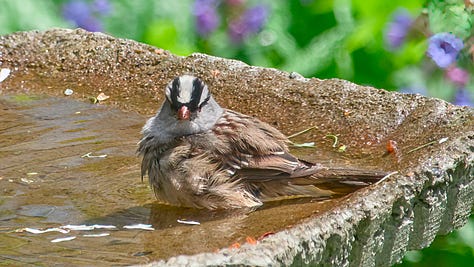

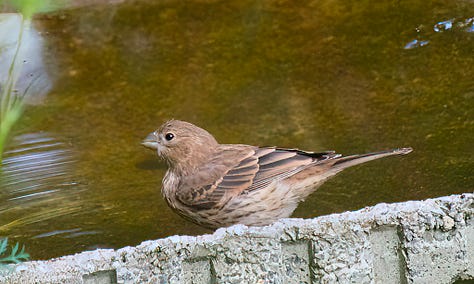
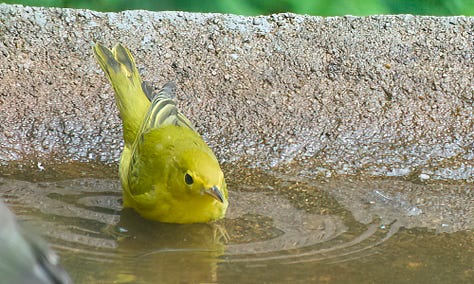
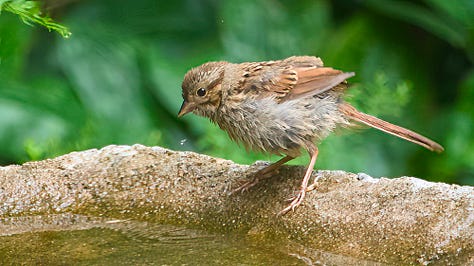
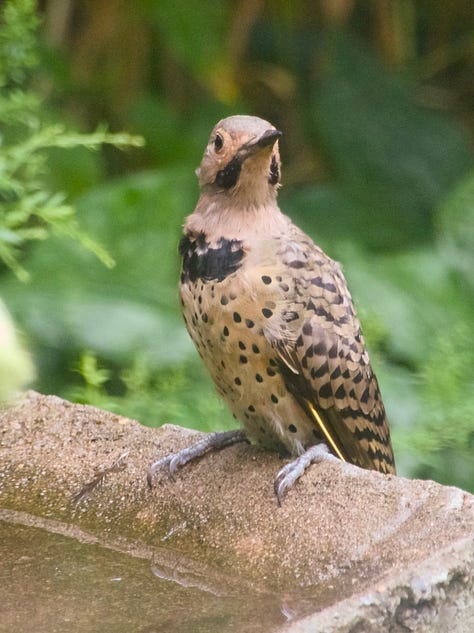
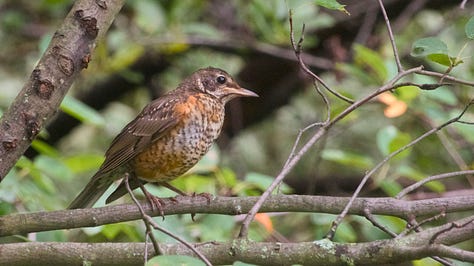
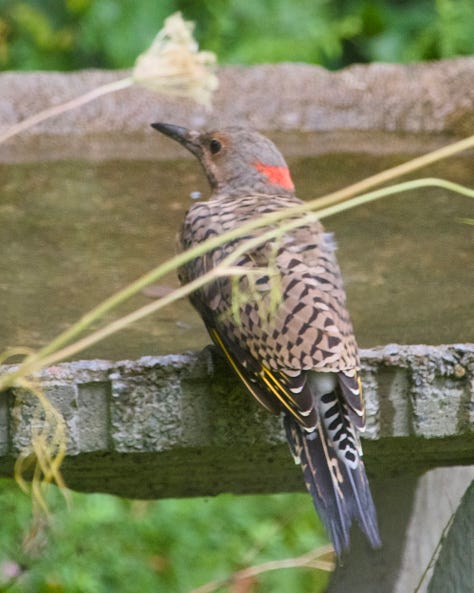
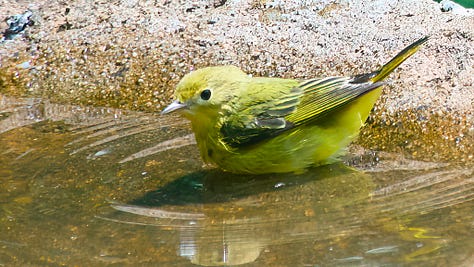
This worries me - a lot
From an article in yesterday’s Globe & Mail:
… the dream of a house with a private backyard is growing more elusive for many Canadians, as more and more city dwellers in this country are living stacked upon each other in those soaring grey towers that give Ms. Verville the shivers. The ability to own an urban backyard is steadily disappearing.
In a survey conducted in the fall of 2022 by Ipsos Public Affairs for the Nature Conservancy of Canada, 80 per cent of respondents said they were worried that future generations wouldn’t be able to access nature close to home.
As Ms. Verville asks: “How are kids going to learn what a butterfly is in their cemented cased community?”
I fully appreciate that not every home can have a garden these days and at the same time be affordable, and so nearby public parks are important in a well designed community. On the other hand it’s not so much the “having” a garden that matters as the opportunity they bring to get your hands dirty and actually grow things … the opportunity to be a gardener. I would also add that too many of the planned urban parks the article mentions are more mown grass than green spaces and so are not as biodiverse as some would have us think. If we can’t provide every home with a proper garden then at least the parks really must have acres of wild flowers and groves of trees full of birds.

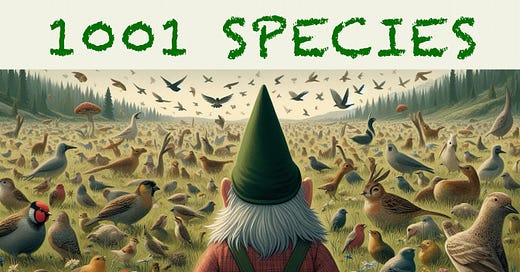



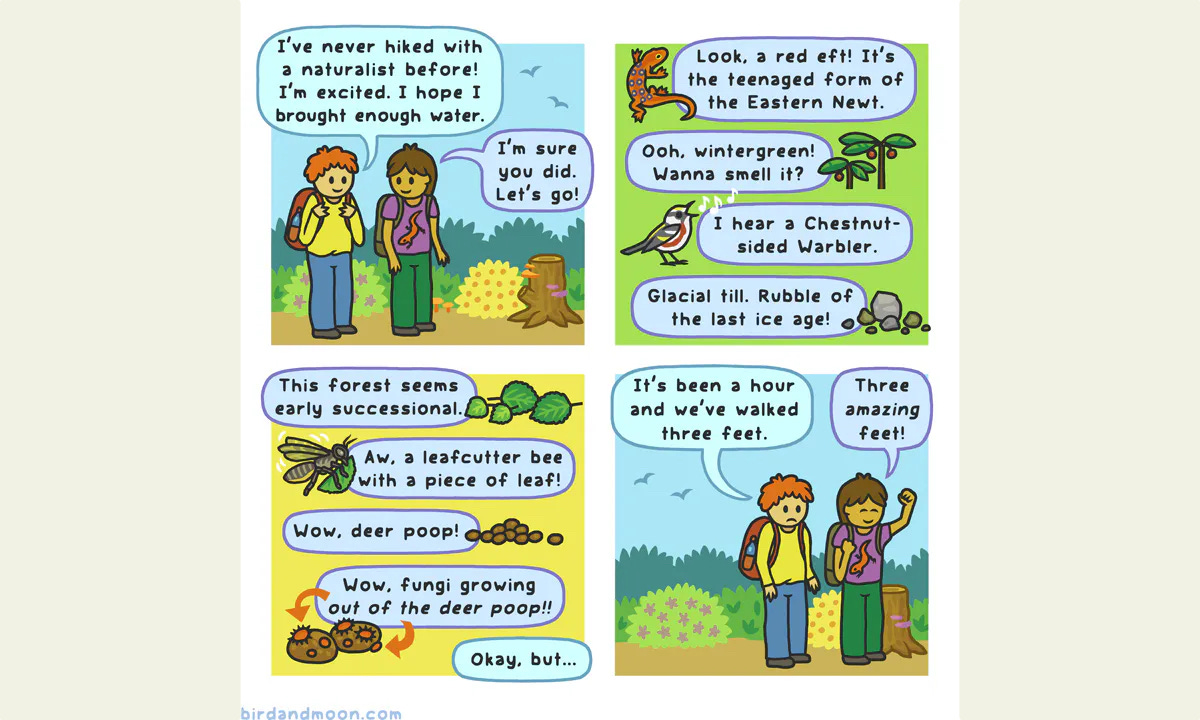
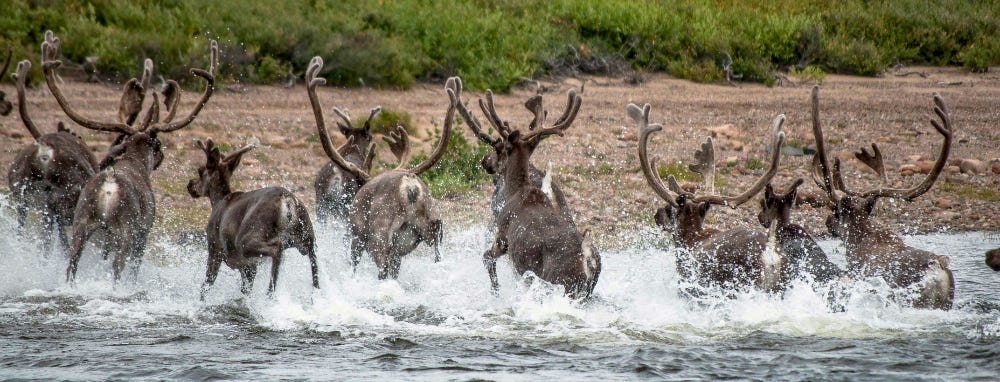





The bird bath mentioned is not a thing of beauty but it is ideal for birds: gently sloping sides of roughened concrete and small stones. The slope allows birds of all sizes to enjoy a splash, dip or drink, the depth gives larger birds sufficient water for a good splash and the rough surface allows for a good grip. It just needs a stiff brush and powerful water jet for regular cleaning.
What a lovely selection of birds visiting your birdbath. And thanks for linking to my article!